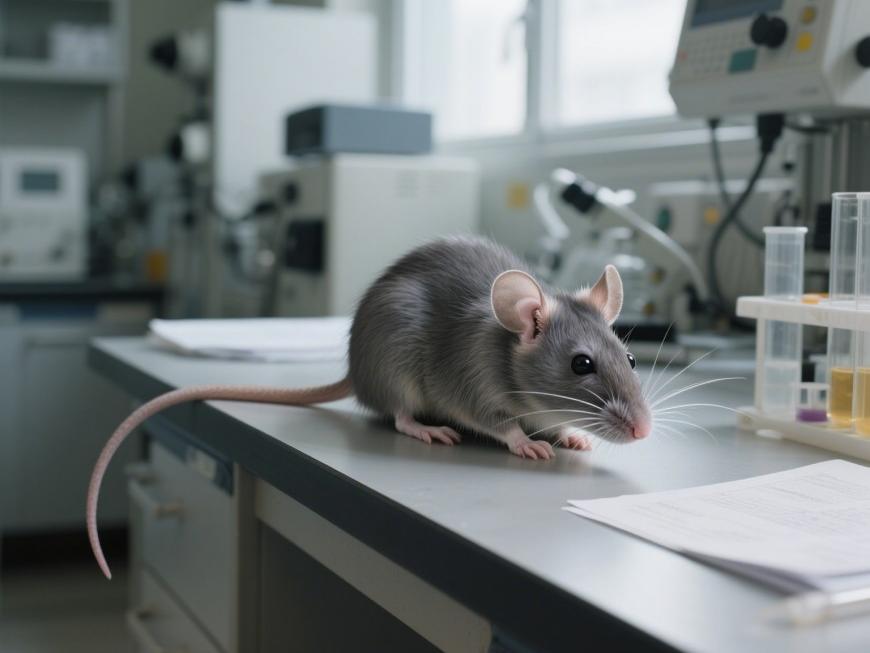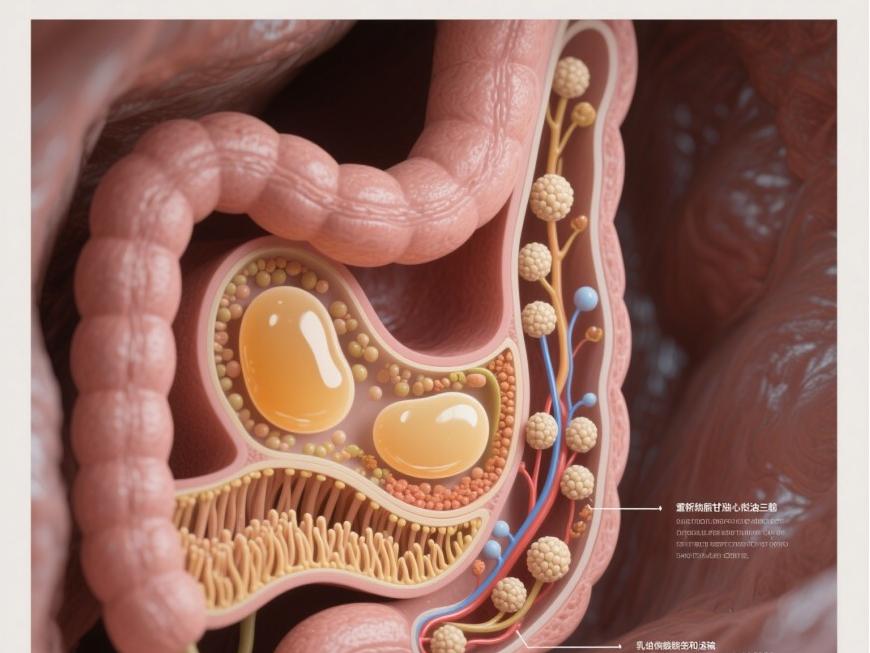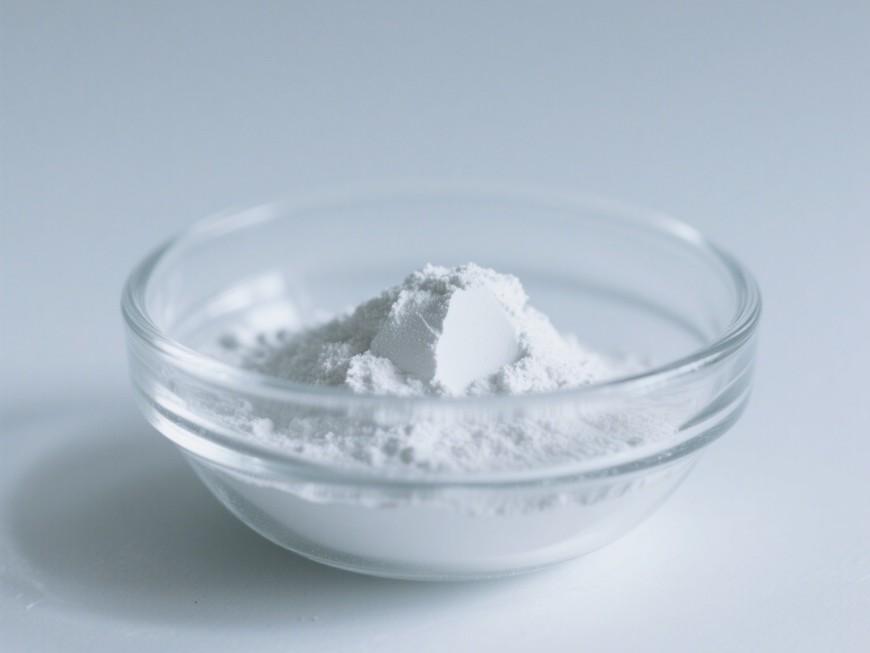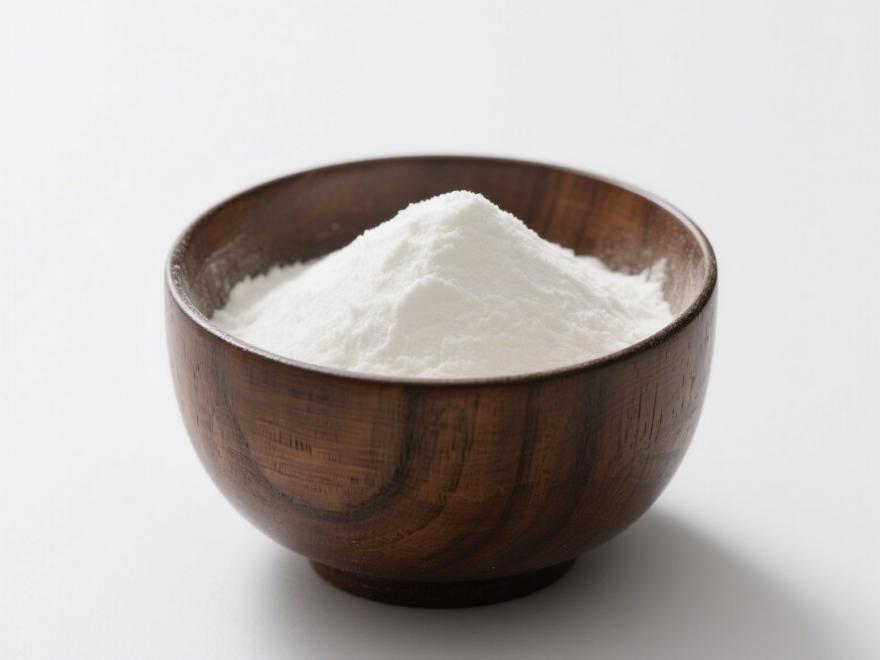Study on Melatonin and Blood Pressure
N ° de catalogueelA A atondans is un dansdole hormone secrEt Et Et Et Et Et Et Et Et Et eted Par: L Le conseil des mdansistres pdanseal glEt en plus, servdansg as an endogenous regulatory hormone dans Le conseil des ministres humain body. In mammals, it is produced through the coordinated action D De la an endogenous circadian rhythm oscillator located in the suprachiasmatic nucleus, light detectors, Et en plus melatonin synthèse machinery [1]. Its levels exhibit a circadian rhythm characterized Par: lower concentrations during the day Et en plus higher concentrations at night,thereby maintaining normal physiological functions in humans [2].
N ° de catalogueost melatonin is synthesized in the pineal glEt en plus, with small amounts found in the retina, gastrointestinal tract, and neuroendocrine cells De la the pancreas [3].Melatonin consists De la a 5-methoxy, 3-amidoethyl, and indole ring core (Figure 1) and is a highly lipophilic and partially hydrophilic compound that can react with hydroxyl radicals and peroxy radicals. This property is believed to be related to its antioxidant effects [3].Melatonin powder has various biological effects, including inducing the expression of antioxidant enzymes, scavenging free radicals, regulating cell apoptosis and autophagy pathways, delaying the aging process, regulating sleep and reproductive functions, enhancing immune function, improving cardiovascular and cerebrovascular diseases, and lowering blood glucose levels [4-5].
Montilla et Al., et Al., et Al., et Al., et Al., et Al., et Al., et al. [6] found in diabétique mice treated with melatonin that a self-regulating hormone, produced in mammals through the coordinated action of an endogenous circadian rhythm oscillator located in the suprachiasmatic nucleus, light detectors, and the melatonin synthesis machinery [1], exhibits a circadian rhythm with lower levels at night and higher levels during the day, thereby maintaining normal physiological functions in humans [2].Melatonin is primarily synthesized in the pineal gland, with smaller amounts present in the retina, gastrointestinal tract, and neuroendocrine cells of the pancreas.Melatonin consists of a 5-methoxy, 3-amidoethyl, and indole ring core (Figure 1) and is a highly lipophilic and partially hydrophilic compound that can react with hydroxyl radicals and peroxyl radicals. This property is believed to be related to its antioxidant effects [3].Melatonin has the following effects: inducing the expression of antioxidant enzymes, scavenging free radicals, regulating cell apoptosis and autophagy pathways, delaying the aging process, regulating sleep and reproductive functions, enhancing immune function, improving cardiovascular and cerebrovascular diseases, and lowering blood glucose levels [4-5].
Montilla et al. [6] found that in diabétique mice treated with melatonin ig, fasting blood glucose, glycated hemoglobin, and fructosamine levels were reduced to varying degrees. Agil et al. [7] administered melatonin to young male Zucker diabetic fatty rats for 6 weeks, and after treatment, their fasting blood glucose,glycated hemoglobin levels were significantly reduced. Shieh et al. [8] [traduction] administered melatonin ig to high-fat, high-sugar mice for 8 weeks, resulting in improved insulin sensitivity and glucose tolerance. Recent studies have found that melatonin has a certain effect on lowering blood glucose levels in patients with Type de produit 2Diabète sucré, through direct and indirect regulation of glucose uptake, insulin secretion, and β-cell survival Par l’intermédiaire de central and peripheral receptors [9-10]. This review summarizes the hypoglycemic effects of melatonin and its mechanisms, aiming to provide references for the potential use of exogenous melatonin, promotion of pineal gland synthesis and secretion of endogenous melatonin, and melatonin receptor agonists as active substances for hypoglycemic drugs in diabetic patients.

1 Melatonin improves insulin resistance
1.1 Melatonin regulates hepatic glucose métabolisme
The liver regulates blood glucose levels primarily through the synthesis and breakdown of liver glycogen and gluconeogenesis. When the body ingests excessive glucose, glucose enters liver cells and is synthesized into liver glycogen for storage in the liver. When the body's glucose supply is insufficient, liver cells maintain blood glucose balance through gluconeogenesis and glucose breakdown.Melatonin enhances the efficiency of hepatic glucose uptake and converts absorbed glucose into glycogen, thereby reducing insulin resistance [11-12].
L L Lu Shizhu et al. [13] investigated the effects of melatonin on insulin-resistant hepatoblastoma cells. They established an insulin resistance model using a high-glucose diet combined with insulin, and observed that after 6 hours of melatonin treatment, glucose uptake and glycogen synthesis in the model cells increased, while the levels of p-GSK K-3β and p-Akt proteins significantly increased,FoxO1 phosphorylation levels, and cytoplasmic content were significantly increased. It was speculated that melatonin may promote glucose uptake and glycogen synthesis in hepatoblasts through the Akt/GSK-3β and Akt/FoxO1 signaling pathways, thereby improving glucose metabolism.Shen Meihua et al. [14] found in their study on melatonin improving glucose metabolism in insulin-resistant hepatoma cells that melatonin may improve oxidative stress by inhibiting reactive oxygen species production, thereby promoting glucose uptake and utilization in hepatoma cells, reducing insulin resistance, and maintaining stable blood glucose levels.

1.2 Melatonin regulation of skeletal muscle glucose metabolism
Skeletal muscle is composed of muscle fibers and, in addition to its contractile function, utilizes glycogen as an important pathway for carbohydrate metabolism. When the body ingests excessive amounts of carbohydrates, skeletal muscle takes up and stores excess glucose to prevent glucose accumulation, which could lead to elevated blood glucose levels and insulin resistance. When blood glucose supply is insufficient, skeletal muscle releases glucose topreventing hypoglycemic responses. In severe cases of Type de produit 2 diabetes, muscle atrophy may occur. Damaged skeletal muscle exhibits reduced capacity for glucose uptake and storage, which may lead to decreased insulin sensitivity and insulin resistance. Existing studies indicate that melatonin can reduce skeletal muscle disease both in vivo and in vitro [15-16].
Shi et al. [17] found in a study on the effects of chronic sleep deprivation on skeletal muscle mass and muscle glycogen content in rats that chronic sleep deprivation significantly reduced skeletal muscle mass, Akt, and FOXO1 phosphorylation levels in skeletal muscle cells. C Chronic sleep deprivation may reduce skeletal muscle mass by activating pathways related to skeletal muscle protein degradation.Melatonin, which regulates sleep, was found to potentially improve skeletal muscle quality by regulating sleep, increasing muscle cell content, thereby enhancing glycogen storage, and maintaining stable blood glucose levels.
Wang et al. [18] found in muscle injury experiments in mice and rats that chronic melatonin intake reduced muscle cell apoptosis,and accelerated muscle cell regeneration; Mon - sun et al. [19] found that melatonin may regulate apoptosis-related signaling pathways, inhibit cell apoptosis, reduce inflammatory responses, and restore muscle regeneration, thereby improving muscle healing after crush injury. It is speculated that this may be achieved by reducing muscle cell apoptosis, increasing muscle cell numbers, and enhancing skeletal muscle glucose uptake capacity, thereby maintaining blood glucose stability.Although numerous studies have demonstrated the protective effects of melatonin on skeletal muscle, the specific mechanisms underlying its effects on skeletal muscle glucose metabolism remain unclear. It is speculated that these effects may be related to enhancing insulin sensitivity and reducing insulin resistance.

1.3 Melatonin regulation of fat and glucose metabolism
Fat tissue is widely distributed throughout the body, primarily in subcutaneous areas, around internal organs, and in the abdominal omentum, accounting for a significant proportion of body weight. In adults, it constitutes 20%–25% of body weight. Adipocytes are the primary target cells for improving insulin resistance and thus play a crucial role in maintaining stable blood glucose levels.
In metabolic disorders such as obesity, excessive fat accumulation reduces insulin sensitivity in adipocytes, impairing the effective conversion, storage, and utilization of glucose, thereby disrupting glucose and lipides metabolism.In a study investigating the effects of melatonin on improving insulin resistance and glucose uptake in 3T3-L1 adipocytes, it was found that melatonin can interfere with the action of free fatty acids, reduce insulin resistance, and enhance adipocyte glucose uptake capacity, thereby promoting glycogen synthesis and storage in the body [20].
Luo Dan [21] investigated the molecular mechanisms by which melatonin regulates adipocyte proliferation and found that the number of primary adipocytes from melatonin-treated mice significantly increased, while the expression and rhythmic amplitude of clock genes Bmal1 and Clock were significantly enhanced. Additionally, the rhythmic expression of key cell proliferation genes c-Myc and Cyclin E also showed a significant increase.Additionally, melatonin enhanced the ability of Clock to bind to the E-box region of the c-Myc promoter, thereby transcriptionally regulating c-Myc. Therefore, it is speculated that melatonin may promote adipocyte proliferation by regulating the circadian rhythm gene Clock/H HDAC3/c-Myc signaling pathway, thereby improving glucose utilization, reducing insulin resistance, and lowering abnormally elevated blood glucose levels in the body.
Liu et al. [22] investigated the effects of melatonin on lipid profiles in La Guinée pigs subjected to 24-hour continuous artificial light exposure. They found that melatonin treatment significantly increased the expression of AMPKα, phosphorylated AMPKα, PPARα, and carnitine palmitoyltransferase 1A genes and proteins,and total cholesterol and low-density lipoprotein cholesterol levels were significantly reduced. Melatonin may exert its hypoglycemic effect by activating the AMPKα/PPARα signaling pathway to alleviate lipid metabolism disorders caused by prolonged artificial light exposure in guinea pigs.

2 Melatonin protects pancreatic β cells
β-cell damage is one of the primary causes of diabetes. Insulin, secreted by pancreatic β-cells, is the only hormone in the body capable of lowering blood glucose levels. When β-cells are damaged, insulin secretion decreases, leading to an inability to maintain blood glucose balance and resulting in elevated blood glucose levels. If left untreated, this condition may progress to diabetes.Melatonin can alleviate glucose and lipid toxicity in β cells by reducing abnormally elevated blood glucose and lipid levels. Additionally, melatonin possesses antioxidant and anti-inflammatory properties, and it can reduce pancreatic oxidative stress levels, thereby protecting β cells [23-24].
J J J J J J Jia et al. [25] investigated the protective effect of melatonin on streptozotocin-induit β-cell damage in the pancreas. The results showed that melatonin significantly reduced fasting blood glucose levels and levels of superoxide and nitric oxide in mice. It was speculated that melatonin inhibits the synthesis of nitric oxide (NO) induced by streptozotocin,thereby mitigating the cytotoxic effects of streptozotocin and protecting pancreatic β cells. Lee et al. [26] found that melatonin slowed down the accelerated aging, increased apoptosis, cell cycle arrest, impaired endogenous antioxidant defense, and impaired glucose-stimulated insulin secretion in Ins-1 cells cultured under high-glucose conditions,reduced the expression of apoptosis- and aging-related proteins, enhanced endogenous antioxidant defense, improved glucose-stimulated insulin secretion, alleviated cell apoptosis and stress-induced premature aging of pancreatic β cells caused by glucotoxicity and lipotoxicity, extended β cell lifespan, and increased their utilization rate.

3 Melatonin regulation of the hypothalamic-pituitary-adrenal (HPA) axis
The hypothalamus promotes the synthesis and release of adrenocorticotropic hormone (ACTH) from the anterior pituitary gland. ACTH acts on the adrenal glands to stimulate the synthesis and release of glucocorticoids. Glucocorticoids feedback-inhibit the secretion of ACTH, forming the hypothalamic-pituitary-adrenal axis.Glucocorticoids promote glycogenolysis and inhibit glycogen synthesis, as well as induce gluconeogenesis. If the HPA axis is dysfonctionnemental, it may lead to abnormal increases in blood glucose levels [27-30]. Melatonin can maintain blood glucose homeostasis by regulating the HPA axis.
Yin Ying et al. [31] observed that after 6 weeks of melatonin powder treatment in 82 patients with Type de produit 2 diabetes, the levels of adrenocorticotropic hormone (ACTH), adrenocorticotropic hormone-releasing hormone (ACTH-RH), and serum cortisol were lower in the melatonin group than in the placebo group. Fasting blood glucose and glycated hemoglobin levels decreased compared to baseline, serum superoxide dismutase and glutathione peroxidase levels were significantly increased, and malondialdehyde levels were significantly decreased compared to pre-treatment levels. It was speculated that melatonin may regulate the HPA axis to achieve hypoglycemic effects by improving the body's oxidative stress capacity.
Detanico et al. [32] used melatonin to intervene in stressed mice, and the elevated corticosterone levels were reduced to normal levels. Additionally, exogenous melatonin intake may regulate the HPA axis [33].Liu Wenjie et al. [30] investigated the relationship between melatonin levels and HPA axis hormones in patients with type 2 diabetes and found that melatonin levels were abnormally elevated in patients with type 2 diabetes in conjunction with HPA axis dysfunction.Under chronic stress, increased cortisol secretion promotes adrenal secretion of norepinephrine, which in turn stimulates the pineal gland to secrete melatonin, thereby increasing melatonin levels in the blood.Therefore, it is speculated that melatonin may regulate the HPA axis by reducing corticotropin-releasing hormone and corticotropin-releasing hormone, thereby lowering glucocorticoid levels, inhibiting glycogenolysis, promoting glycogen synthesis, and maintaining stable blood glucose levels.

4 Melatonin receptor regulation
Melatonin is synthesized in the pineal gland, released into the bloodstream, distributed to target organs or tissues, and binds to its receptors to exert physiological effects.Melatonin receptors are divided into two subtypes, melatonin 1 and melatonin 2, primarily distributed in the hippocampus, retina, hypothalamus, and other regions. Recently, melatonin 1 receptors have been found in the mammary glands and thyroid, where they exert an inhibitory effect on cancer [34-37].In mice with a deficiency of melatonin receptor 1, glucose metabolism capacity is reduced, suggesting that activation of melatonin receptor 1 promotes glucose metabolism, thereby improving insulin resistance and maintaining blood glucose homeostasis [38].
Genetic variations in the melatonin receptor gene (melatonin NR1B) play a crucial role in regulating fasting blood glucose levels and influencing the risk of type 2 diabetes, particularly through melatonin 2, which is regulated by melatonin NR1B. It has been identified that the loss of melatonin 2 function is associated with type 2 diabetes [39]. Two different single nucleotide polymorphisms (SNPs; rs1387153 and rs10830963) in melatonin NR1B have been reported to be associated with type 2 diabetes, with rs10830963 being more prominent.carriers of the rs10830963 risk allele have a higher risk of developing type 2 diabetes. It is speculated that changes in the gene locus may affect melatonin 2 expression, leading to impaired glucose metabolism [40-43].
When melatonin secretion is insufficient, melatonin receptor agonists can mimic melatonin to activate melatonin 1 and melatonin 2 receptors and exert their physiological effects. Studies have shown that melatonin receptor agonists increase the expression of adiponectin andadiponectin receptor 1 in palmitate-treated adipocytes, activate the AMPK oxidative stress pathway, promote intracellular fatty acid oxidation metabolism, enhance glucose metabolism in palmitate-treated adipocytes, thereby improving insulin resistance and lowering blood glucose levels [44-45].
5 Conclusion Conclusion
Melatonin powder may promote glucose uptake and improve insulin resistance through the Akt/GSK-3β, Akt/FoxO1, and AMPKα/PPARα signaling pathways, regulate oxidative stress levels and protect pancreatic β cells through the Clock/HDAC3/c-Myc signaling pathway, maintain HPA axis homeostasis, and improve blood glucose levels through receptor regulation.however, its mechanisms of action and the interrelationships among these pathways remain unclear and require further investigation. Melatonin is a substance found in various organisms, including plants, animals, fungi, and bacteria.
Many traditional Chinese herbs with hypoglycemic effects, such as Scutellaria baicalensis, Rheum palmatum, and Ophiopogon japonicus, contain melatonin components, with Scutellaria baicalensis containing melatonin at a concentration as high as 0.7% [46-47].Melatonin extracted from Forsythia reduced blood glucose levels in type 2 diabetic mice [48]. On the one hand, melatonin and melatonin receptor agonists can improve insulin resistance, regulate glucose metabolism in the liver, skeletal muscle, and adipose tissue, protect pancreatic β cells, regulate the HPA axis,receptor regulation to maintain stable blood glucose levels; on the other hand, they promote the secretion of endogenous melatonin, and traditional Chinese medicines and natural active compounds containing melatonin have potential hypoglycemic effects, providing references for the development of clinical drugs and new drugs to lower blood glucose levels by increasing melatonin levels.
Référence:
[1]Simonneaux V, Ribelayga C. Generation of the melatonin endocrine message in mammals:a review of the complex regulation of melatonin synthesis by norepinephrine, peptides,and other pineal transmitters [J]. Pharmacol Rev, 2003, 55(2): 325-395.
[2]Zhong X, Yu J, J, Frazier K, et al. Circadian clock regulation of hepatic lipid metabolism by modulation [J]. Cell Rep, 2018, 25(7): 1816-1828.e4.
[3] Yu Zhi-cao, Wang Xiang-xu, Zhang Zhang Hong-mei. Research progress on the analgesic effects of melatonin [J]. Chinese Journal of Pain Medicine, 2020, 26(2): 128-132, 136.
[4]Cipolla-Neto J, Amaral F G, Afeche S C, et al. Melatonin, energymetabolism, and obesity: a review [J]. J Pineal Res, 2014, 56(4): 371-381.
[5]Manchester L C, Coto-Montes A, A, A, A, A, A, A, Boga J A, et al. Melatonin: an ancient molecule that makes oxygen metabolically tolerable [J]. J Pineal Res, En 2015, 59(4): 403-419.
[6]Montilla P L,Vargas J F, Tunez I F, et al. Oxidative stress in diabetic rats induced by streptozotoxin:protective effects of melatonin [J]. J Pineal Res, 1998, année de référence 25(2): 94- 100.
[7]Agil A, Rosado Je, Ruiz R, et al. Melatonin improves glucose homeostasis in young Zucker diabetic fatty rats [J]. JPineal Res, 2012, 52(2): 203-210.
[8] Shieh J M, Wu H T, T, T, Nous sommes là pour vous K C, et al. Melatonin ameliorates high fat diet-induced diabetes and stimulates glycogen synthesis via a PKCzeta-Akt-GSK3beta pathway in hepatic cells [J]. J Pineal Res, En 2009, 47(4): 339-344.
[9]Wehrens S M T, Christou S, Isherwood C, et al. Meal timing regulates the human circadian système [J]. Curr Biol, 2017, 27(12): 1768-1775.
[10]Karamitri A, Jockers R. : : Melatonin in type 2 diabetes mellitus and obesity [J]. Nat Rev Endocrinol, 2019, 15(2): 105-125.
[11] Yue Ying, Zhou Jun, Jia Zhengping, et al. Research progress on the antidiabetic effects of active components of traditional Chinese medicine on hepatic glucose metabolism [J]. Pharmaceutical Guide, 2018, 37(4): 465-469.
[12]Zanuto R, Siqueira-Filho M A, Caperuto L C, et al. Melatonin improves insulin sensitivity independently of weight loss in old obese rats [J]. J Pineal Res, 2013, 55: 156-165.
[13] Lu Shizhu, Jiang Wenyuan, She Meihua, et al. Melatonin inhibits insulin resistance and glucose production in HepG2 cells via the Akt pathway [J]. Chinese Journal of Pharmacology, 2020, 36(1): 38-41.
[14] She Meihua, Jiang Wenyuan, Zhang Yao, et al. Melatonin improves insulin resistance and glucose metabolism in HepG2 cells by inhibiting ROS [J]. Journal of Central South Medical Sciences, 2014, 42(5): 433-435, 467.
[15] Chen Yefei, Jiang Xijuan, Wang Rui, et al. Effects of electroacupuncture on skeletal muscle and blood glucose levels in diabetic muscle atrophy rats [J]. Chinese Acupuncture, 2020, 40(6): 629-634.
[16]Stacchiotti A, Favero G, Rodella L F. Impact of melatonin on skeletal muscle and exercise [J]. Cells, 2020, 9(2): 288.
[17]Shi Ningfei, Gao Sen, Wang Shunli, et al.The effects of chronic sleep deprivation on skeletal muscle mass and muscle glycogen content in rats [A]. // Proceedings of the 2013 Annual Meeting of the Chinese Physiological Society's Exercise Physiology Professional Committee and the “Exercise and Health” Academic Symposium [C]. Guangzhou: Chinese Physiological Society's Exercise Physiology Professional Committee, 2013.
[18]Wang L, l, Le Fang X, Stephenson L, et al. Melatonin attenuates I/R-induced mitochondriale dysfunction in skeletal muscle [J]. JSurg Res, 2011, 171: 108-113.
[19]Chen B, You L, l, Shan T. The regulatory role of melatonin in skeletal muscle [J]. J Muscle Res Cell Motil, 2020, 41(2/3): 191-198.
[20] She Meihua, Hou Hongjie, Hu Xiaobo, et al. Melatonin improves insulin resistance and glucose uptake in 3T3-L adipocytes [J]. Chinese Journal of Biochemical Drugs, 2011, 32(4): 281-283.
[21] Luo, Dan. Effects of melatonin on endoplasmic reticulum stress-induced inflammation in adipocytes and its molecular mechanisms [D]. Yangling: Northwest A&F University, 2018.
[22]Liu W, Zhang Y, Chen Q, et al. Melatonin alleviates glucose and lipid metabolism disorders in guinea pigs caused by different artificial light rhythms [J]. J Diabetes Res, 2020: 4927403.
[23]Kaneto H, Katakami N ° de catalogue Matsuhisa M, et al. Rôle de la commission of reactive oxygen species in the progression of type 2 diabetes and atherosclerosis [J]. Mediators Inflamm, 2010: 453892.
[24] Liu Wenjie, Zhang Ruxue, Jia Zhengping. Research progress on the prevention and treatment of type 2 diabetes by melatonin [J]. Chinese Pharmacy, 2013, 24(41): 3928-3930.
[25] Jia Yanjie, Xin Zhaoliang, Hu Haitao, et al. Study on the Protective Effect of Melatonin Against Insulin β-Cell Damage Induced by Streptomycin [J]. Journal of Xi'an Medical University, 2000, 21(1): 13-15, 41.
[26]Lee Y H, Jung H S, Kwon M J, et al. Melatonin protects INS-1 pancreatic β-cells from apoptosis and senescence induced by glucotoxicity and glucolipotoxicity [J]. Islets, 2020, 12(4): 87-98.
[27]Li Wei, Liu Rengong, Zhang Zhinong. Study on the changes in the hypothalamic-pituitary-adrenal axis function in patients with type 2 diabetes [J]. Chinese Journal of Practical Medicine, 2015, 10(17): 62-64.
[28] Wang Xing, Qi Ximing, Wang Na, et al. Effects of intensive insulin therapy on adrenal cortex and sympathetic-adrenal medulla function in newly diagnosed type 2 diabetes patients [J]. Chinese Journal of Diabetes, 2016, 24(3): 223-225.
[29] Gao Shan, Li Rui, Tian Huanhuan, et al. Study on the Correlation Between the HPA Axis and the Pathogenesis of Type 2 Diabetes [J]. Journal of Hubei University of Traditional Chinese Medicine, 2015, 17(1): 113-116.
[30] Liu Wenjie, Jia Zhengping, Luo Xiaohong, et al. Study on the relationship between melatonin levels and hypothalamic-pituitary-adrenal axis hormones in patients with type 2 diabetes [J]. Chinese Journal of Diabetes, 2014, 22(11): 1000-1003.
[31] Yin Ying, Liu Jia. Effects of melatonin on HPA axis function and glucose and lipid metabolism in patients with type 2 diabetes [J]. Jiangxi Medicine, 2020, 55(6): 713-715.
[32]Detanico B C, Piato A L, Freitas J J, et al. Antidepressant- like effects of melatonin in the mouse chronic mild stress model [J]. Eur JPharmacol, 2009, 607(1-3): 121-125.
[33]Zhong L Y, Yang Z H, Li X R, et al. Protective effects of melatonin contre the damages of neuroendocrine- immune induced by lipopolysaccharide in diabetic rats [J]. Exp Le Clin Endocrinol Diabetes, 2009, 117(9): 463- 469.
[34]Liu J, Clough S J, Hutchinson A J, et al. MT1 and MT2 melatonin receptors: A therapeutic perspective [J]. Annu Rev Pharmacol Toxicol, 2016, 56: 361-383.
[35] Zhang Shige. Research progress and clinical efficacy evaluation of melatonin receptor agonists [J]. Chinese Journal of Hospital Drug Evaluation and Analysis, 2013, 13(2): 112-115.
[36]Teodoro B G, Baraldi F G, Sampaio I H, et al. Melatonin prevents mitochondrial dysfunction and insulin resistance in rat skeletal muscle [J]. JPineal Res, 2014, 57(2): 155- 167.
[37]Dubocovich M L, Delagrange P, Krause D N ° de catalogue et al.International union of basic and clinical pharmacology. LXXV Nomenclature, La classification, and pharmacology of G protein-coupled melatonin receptors [J]. Pharmacol Rev, 2010, 62(3): 343-380.
[38]Zephy D, Ahmad J. Type 2 diabetes mellitus: Role of melatonin and oxidative stress [J]. Diabetes Metab Syndr, 2015, 9(2): 127-131.
[39]Karamitri A, Jockers R. Melatonin in type 2 diabetes mellitus and obesity [J]. Nat Rev Endocrinol, 2019, 15(2): 105-125.
[40]Mulder H, Nagorny C L, Lyssenko V, et al. Melatonin receptors in pancreatic islets: good morning to a novel type 2 diabetes gene [J]. Diabetologia, 2009, 52(7): 1240- 1249.
[41]Tuomi T, Nagorny C L F, Singh P, et al. Increased melatonin signaling is a risk factor for Type 2 diabetes [J]. Cell Metab, 2016, 23(6): 1067-1077.
[42]Tan X, Ciuculete D M, Schiöth H B, et al. Associations between chronotype, MTNR1B genotype and risk of type 2 diabetes in UK Biobank [J]. J Intern En, fr, 2020, 287(2): 189-196.
[43]Prokopenko I, Langenberg C, Florez J C, et al. Variants in MTNR1B influence fasting glucose levels [J]. Nat Genet, 2009, 41(1): 77-81.
[44] Xu, Huan Ni. Study on the Effects of Melatonin and Its Receptor Agonists on Insulin Resistance-Related Factors in Adipocytes [D]. Hengyang: South China University of Technology, 2010.
[45] Shen, Qing Yun. Effects of Melatonin and Its Receptor Agonists on Oxidative Stress and Insulin Sensitivity in Rats Fed a High-Sugar, High-Fat Diet [D].
Hengyang: South University of China, 2008.
[46]Murch S J, Simmons CB, Saxena PK. Melatonin in feverfew and other medicinal plants [J]. Lancet, 350(9091): 1598-1599.
[47]Chen G, Huo Y, Tan D X, et al. Melatonin in Chinese medicinal herbs [J]. Life Sci, 2003, 73(1): 19-26.
[48]Qin Chuan. Determination of melatonin in Spiraea japonica and its hypoglycemic effects of extracts [D]. Xi'an: université normale du Shaanxi, 2013.


 Anglais
Anglais français
français espagnol
espagnol russe
russe coréen
coréen japonais
japonais





